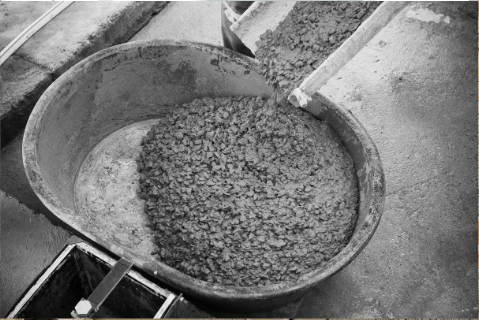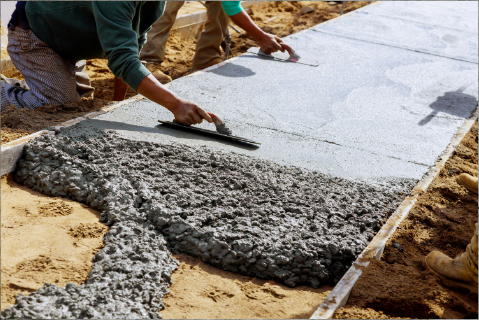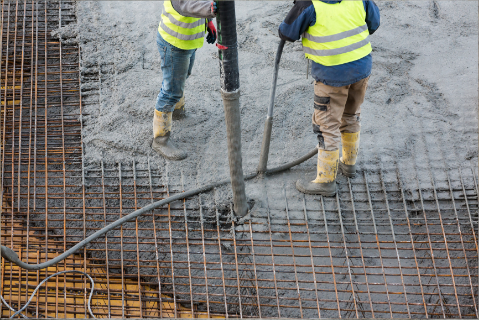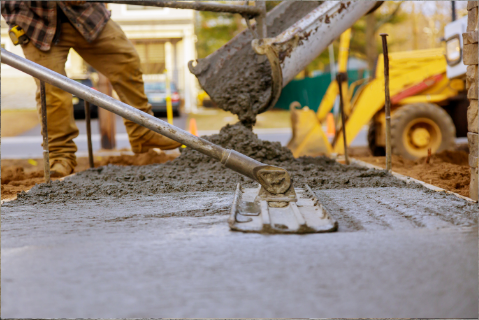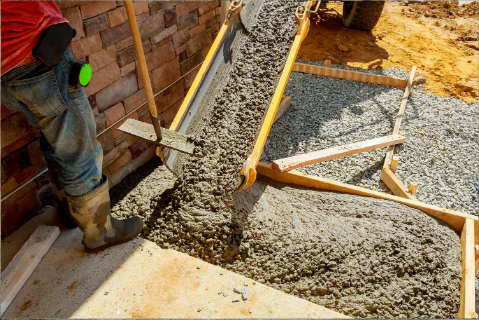Concrete is ubiquitous in our daily lives – we walk on it, drive on it, work and live on it. It forms the very foundation of our civilization. Yet, for many, it remains an overlooked aspect of our environment until the need arises for a concrete project. However, what may seem straightforward at first glance can quickly reveal its complexities, particularly when hiring a concrete contractor for tasks like replacing a driveway or installing a new patio. Let’s delve into the intricacies of concrete construction and equip you with the knowledge needed to navigate these projects successfully.
Understanding Concrete:
What You Need to Know First and foremost, it’s essential to dispel the common misconception that equates concrete with cement. Concrete is a blend of various materials, including Portland cement, sand, gravel or crushed stone, and water. Cement is merely one ingredient in this mixture. Just as you wouldn’t mistake yeast for cake, it’s crucial to recognize the distinction between cement and concrete. When water is added to the mix, Portland cement undergoes a chemical reaction known as hydration, gradually hardening the concrete over time. Furthermore, additives are incorporated into the mix to enhance specific properties such as strength, durability, and workability.
Key Concrete Additives:
Water-reducers: Enhance workability without compromising strength by minimizing the need for excessive water, which can weaken the concrete. • Air-entraining agents: Improve freeze-thaw resistance by creating microscopic air bubbles within the concrete, providing space for water expansion during freezing temperatures. • Accelerators & Retarders: Adjust the curing process to suit varying environmental conditions, such as extreme heat or cold, thereby ensuring optimal concrete hardening. Skilled contractors understand how to utilize these chemicals effectively.
Deciphering Concrete Mixes:
The composition of a concrete mix, often referred to as a “Sack Mix,” determines its strength. For instance, a 5 Sack Mix contains five bags of Portland cement. Generally, the more bags of cement in a mix, the stronger it is. However, factors such as water-to-cement ratio and air content also influence strength. For driveways subjected to heavy vehicular traffic, a 6 Sack Mix is recommended to ensure durability.
Addressing the Cracking Conundrum:
Concrete’s tendency to crack is a reality that cannot be ignored. Despite its exceptional compression strength, concrete exhibits minimal resistance to tensile forces, making cracking inevitable. Factors such as shrinkage, temperature fluctuations, heavy loads, and poor sub-base conditions contribute to cracking. However, proper installation techniques, including strategic joint placements and reinforcement, can help mitigate this issue.
Effective Reinforcement Techniques:
While it’s true that all concrete will eventually crack, reinforcement measures can minimize cracking and maintain structural integrity. Steel wire mesh and fiber reinforcement are commonly employed for this purpose. Steel wire mesh, when properly raised during concrete pouring, helps hold the concrete together post-cracking. On the other hand, fibers aid in reducing early-stage cracking, particularly plastic shrinkage cracking. It’s advisable to utilize both steel and fiber reinforcement for optimal results.
Implementing Best Practices for Durable Concrete:
Achieving high-quality concrete work entails adhering to industry best practices recommended by organizations such as the American Concrete Institute. Key recommendations include ensuring a solid base, utilizing fibers to reduce early-stage cracking, employing appropriate finishing techniques, and installing control joints at recommended intervals to manage cracking effectively.
Mastering the fundamentals of concrete construction is essential for anyone embarking on a concrete project.
By understanding the nuances of concrete composition, additives, reinforcement techniques, and best practices, you can ensure the success and longevity of your projects. Whether you’re a homeowner or a business owner, armed with this knowledge, you can confidently navigate concrete projects and make informed decisions every step of the way.



